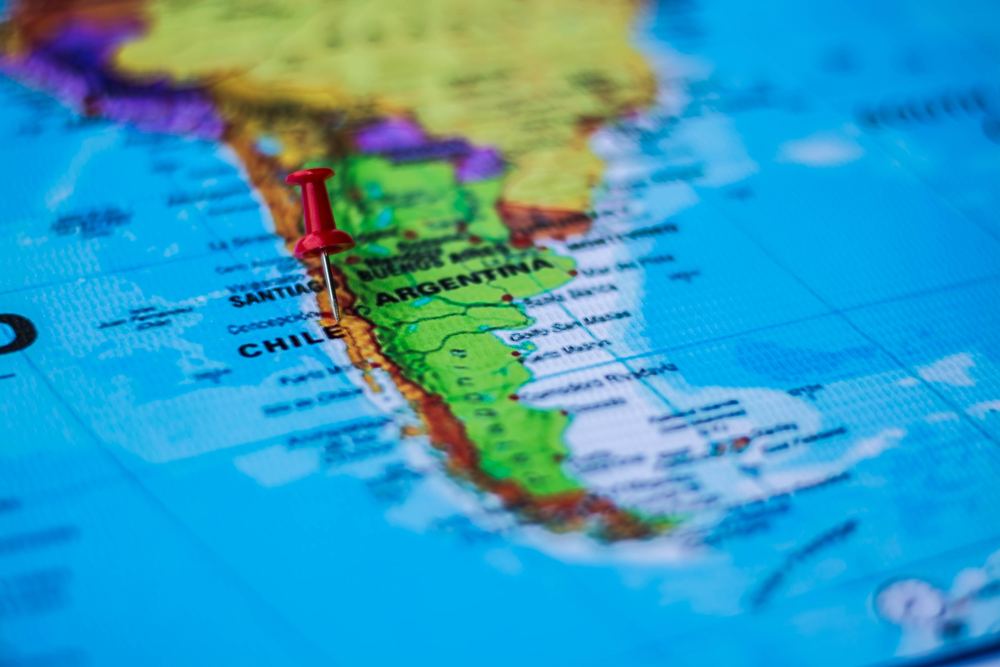Bust out your map, today we’re taking a look at Chile. The quiet country that occupies a narrow space between the Andes and the Pacific Ocean, it’s often overshadowed by its flashier neighbors: Peru to the north and Argentina to the east. Chile is home to more than 18 million people and its geographical location makes it home to a diverse group of crops … and cooking styles. Join us as we crack open some books, er, web sites, and learn a little more about Chilean cuisine. [pagebreak]
Northern Cuisine
Chile spans more than 290,000 square miles with a stunning array of climates and landscapes stacked on one another. The Andes are both harsh and cool and the Pacific Ocean plentiful and warm. That makes cuisines hyper local and as varied as the biodiversity in the country. Northern cuisine is heavily influenced by three indigenous groups: the Andean Aymara and Atacameno groups and the coastal Chango.
Up north you’ll find dishes high in protein (and the use of nontraditional meats) as well as lot of tubers. Think: hearty, rustic dishes. Here you’ll find:
Asado: roasted meat. We’re all familiar with this one.
Ensalada de Quinoa: nothing new here. But this dish illustrates how ubiquitous (and helpful) quinoa is in South America. Packed with protein, it’s a workhorse staple.
Cazuela Marina: Due to access to the Pacific, you’ll find seafood dishes here. Often, you’ll find it cooked in a stew (usually razor clams, shrimp, and oysters) loaded down with tubers and veggies. [pagebreak]
Cuisine of the Central Valley
The central region of Chile is home to many of the dishes you’ll be most familiar with. The cuisine here was heavily influenced by European immigrants and local agriculture. Here, the ranch and the farm were at the center of daily life and food changed with the seasons. Here you’ll find:
Palta Reina: a beautiful avocado stuffed with chicken, tuna, or prawns. It’s rustic and portable.
Pastel de choclo: this is a family-style layered dish, like a Caribbean pastelon. It’s made with minced and stewed beef and boiled egg, and topped with a corn mix then baked in the oven.
Humitas: these are similar to tamales, fresh and ground corn steamed in a corn husk. [pagebreak]
Southern Cuisine
In the south of Chile, cuisine has been heavily influenced by German immigrants and you’ll find German cakes and desserts are part of the diet. And because of the thousands of islands in the south of the country, you’ll also find seafood is plentiful. You’ll also find:
Merken: this is a dried condiment made from dried and smoked red chill and coriander and it’s used like salt and pepper. Sprinkle it on everything.
Milcao: like a potato pancake, milcaos are made from raw potatoes or mashed cooked potatoes and griddled until golden. They’re usually topped with a savory salsa. But don’t let that stop you from trying sweet breakfast versions (though not as common).
Sopapillas: a fried dough made with flour and water or pureed pumpkin. Savory versions are topped with chili sauce or mustard; sweet versions with caramel. [pagebreak]
Drinks and Fast Food
In recent years, Chile has begun to make its mark in the wine world (and Chilean pisco doesn’t need an explanation). But all over the country, you’ll also find:
Borgona: like a sangria, this is cold red wine with chopped fruits and a sprinkle of sugar.
Chicha: a celebratory drink, this is sweet fermented wine made from grapes and sometimes apples.
Cola de mono: this is a holiday drink served around Christmas. It’s eggnog’s South American cousin.
Chacarero: a hearty and delicious beef sandwich topped with tomato, avocado, green beans, and mayo.
Completo: perhaps one of Chile’s most famous dishes this is a fully loaded hot dog with the works.


![Making Mealtime Matter with La Familia: Easy Sofrito [Video]](https://thelatinkitchen.com/wp-content/uploads/2015/10/sofrito-shutterstock__0-500x383.jpg)
![Easy Latin Smoothies: Goji Berry Smoothie [Video]](https://thelatinkitchen.com/wp-content/uploads/2015/12/goji_berry-shutterstock_-500x383.jpg)
















![Fun and Fast Recipes: Fiesta Cabbage Salad [Video]](https://thelatinkitchen.com/wp-content/uploads/2015/11/fiesta_cabbage_slaw-shutterstock_-500x383.jpg)









